Iris, planting guide and care work
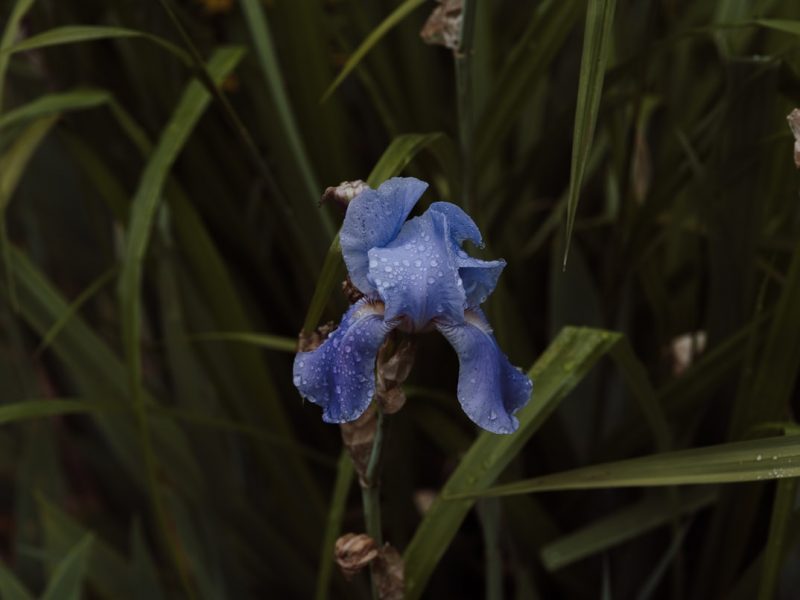
Iris florentina, Florentine Iris, or Glaive lily has been known and used for over 2000 years. Of the 100 species, some are considered aromatic, others have medicinal properties, and others are used as decorative flowers.
Iris florentina is an aromatic species, representing an important source of raw material for the fine fragrance and cosmetics industry (powders, toothpaste, soaps), being the species richest in iron, a substance with viola fragrance. Thus, in Italy, 1100 t of rhizomes are processed annually, and in France, where it has been cultivated since 1835, 350 t are processed each year.
The volatile oil is also used to fix other less persistent fragrances. Glaive lilies are used to flavor liqueurs, vermouth, and special table wines. Are is also used to flavor cigarettes.
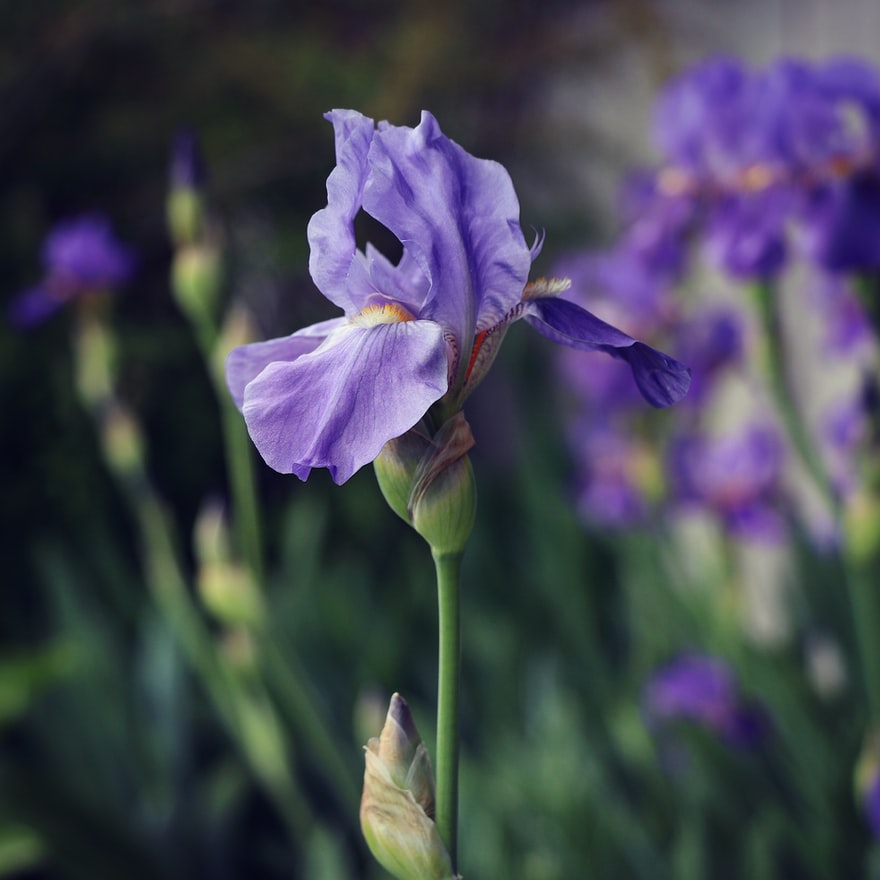
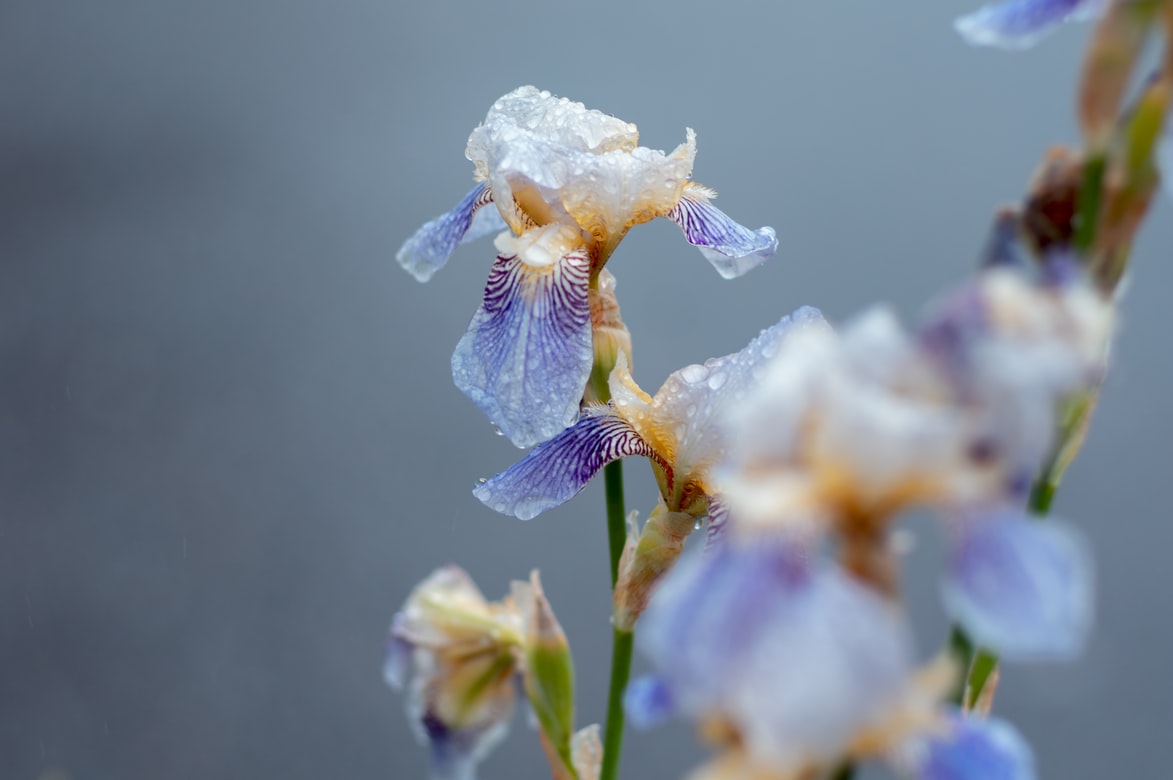
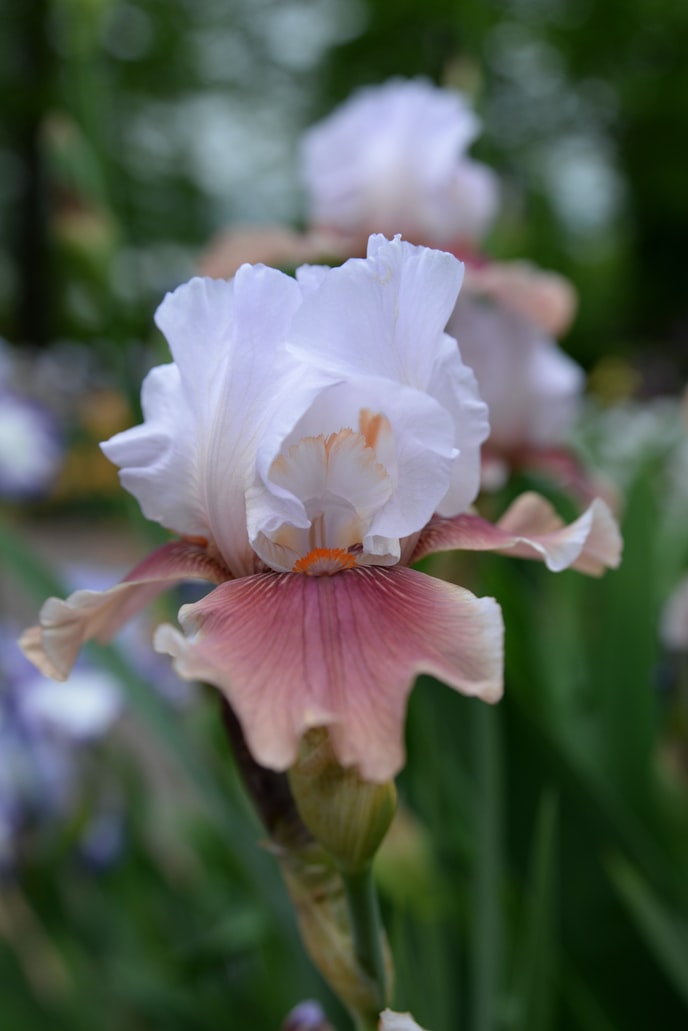
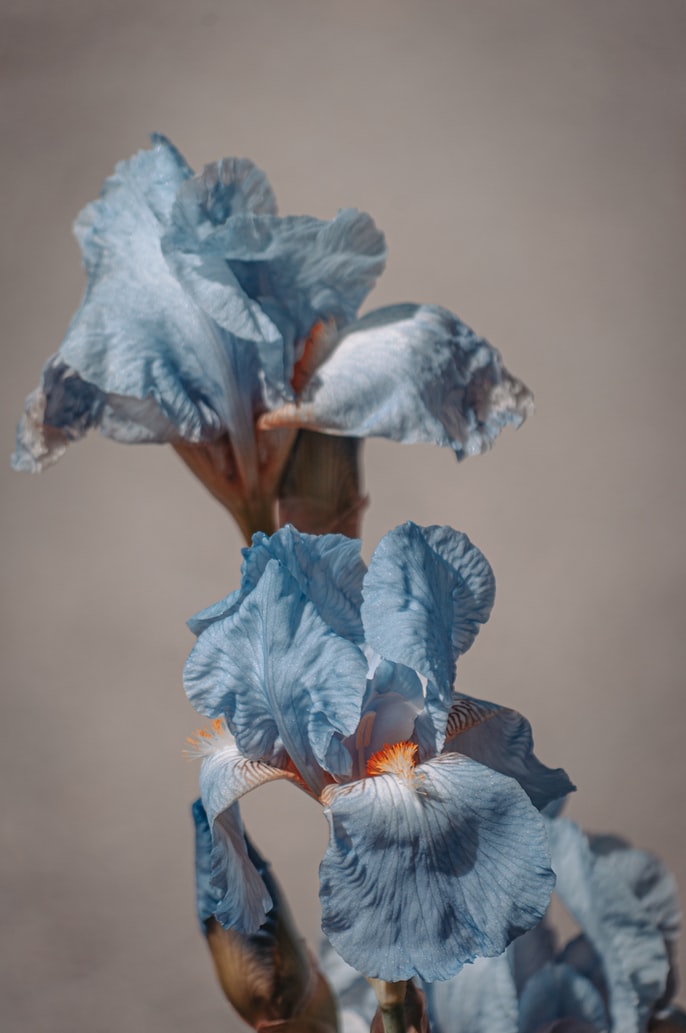
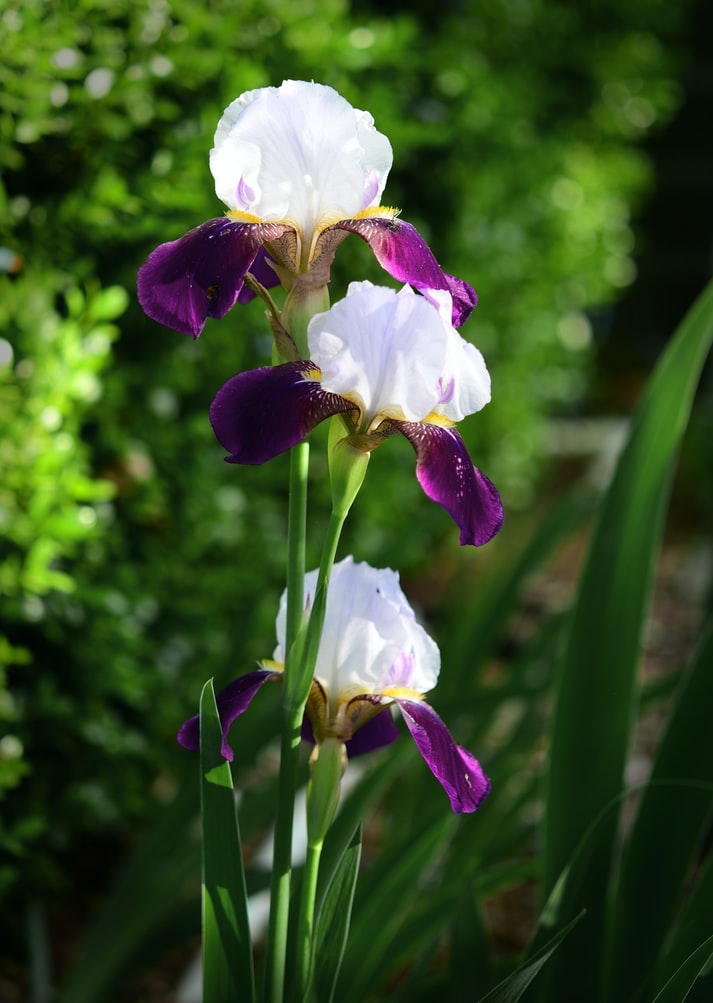
Description, species, varieties
Iris florentina is a perennial, herbaceous species. The underground part is a brown rhizome, arranged in a horizontal position at a depth of 6-14 cm. The rhizome consists of larger segments that develop in spring, with a diameter of up to 3-4 cm, and less developed segments that form during the summer, with strangled areas between segments. It has a fleshy consistency, it is branched and has numerous adventitious roots, located on the lower part in an almost vertical position.
The stem is 0.5-1 m high, bears small leaves, and develops a flower at the top.
The leaves, developed from the rhizome, are sessile and have the shape of a sword (ensiform), being arranged in fans, in groups of 5-8 and are 50-75 cm long, 2-4 cm wide, with longitudinal ribs, almost parallel.
The flower is protected by two basal green bracts, membranous on the topside, being made up of a cylindrical perigonium at the base, separated at the top by 6 petaloid tepals, of which the 3 exterior ones are bent outwards, obovate, colored in white, with a median brown rib, very pleasantly fragrant, and the 3 inner tepals are round or ovate, straight and slightly bent towards the center. The flower has 3 stamens protected by the outer tepals, with an inferior ovary, with the short pistil, and with 3 petaloid stigmas.
The fruit is represented by a brown capsule, triangular when sectioned, with a length of 4.5-5. 5 cm and a width of 1.5-2 cm, which opens on 3 longitudinal lines.
The seed is globular, black, glossy.
Other species used in cultivation are: I. Germanica L., which is characterized by dark purple flowers, is pleasantly fragrant, and I. Germanica L., which has smaller flowers, light purple, with a fragrant smell.
In the spontaneous flora of some European countries, I. Pseudacorus L., with yellow flowers, and I pallida Lam. can be frequently found.
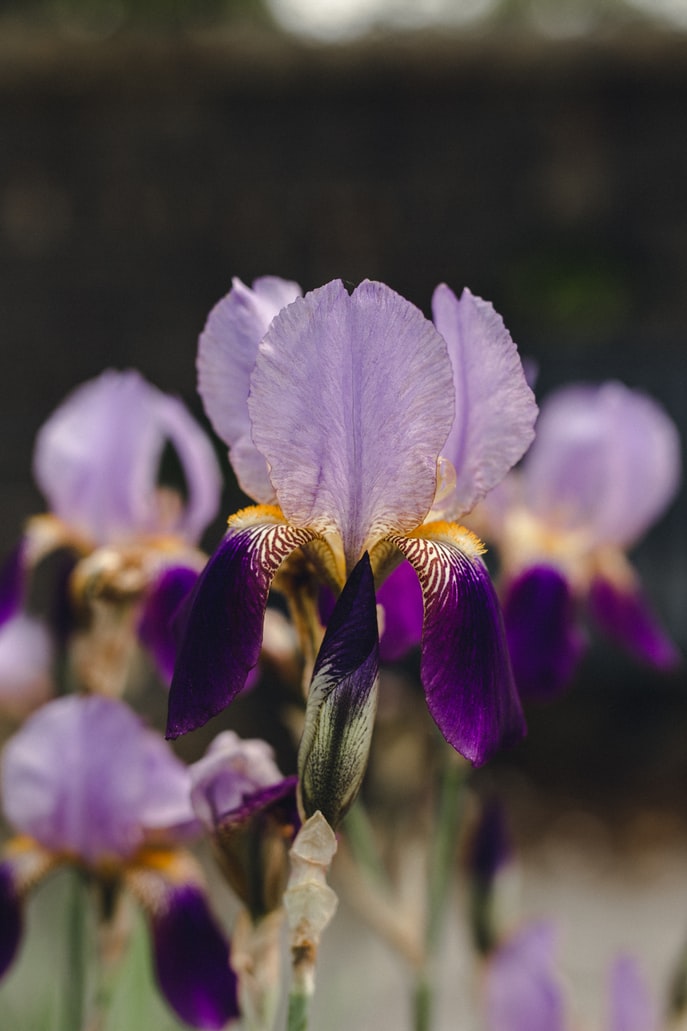
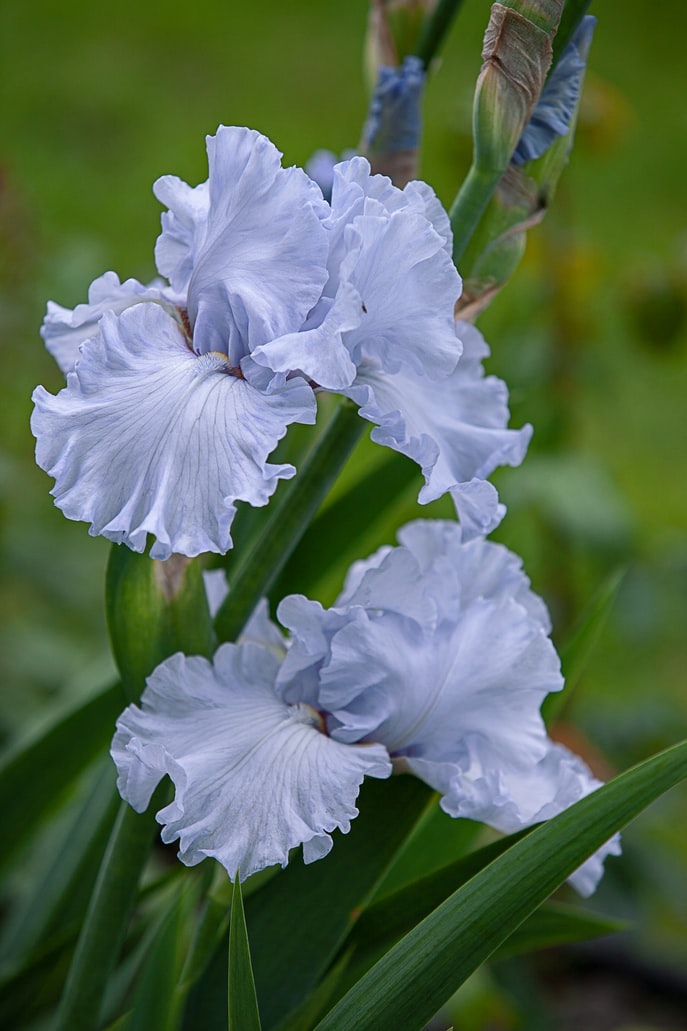
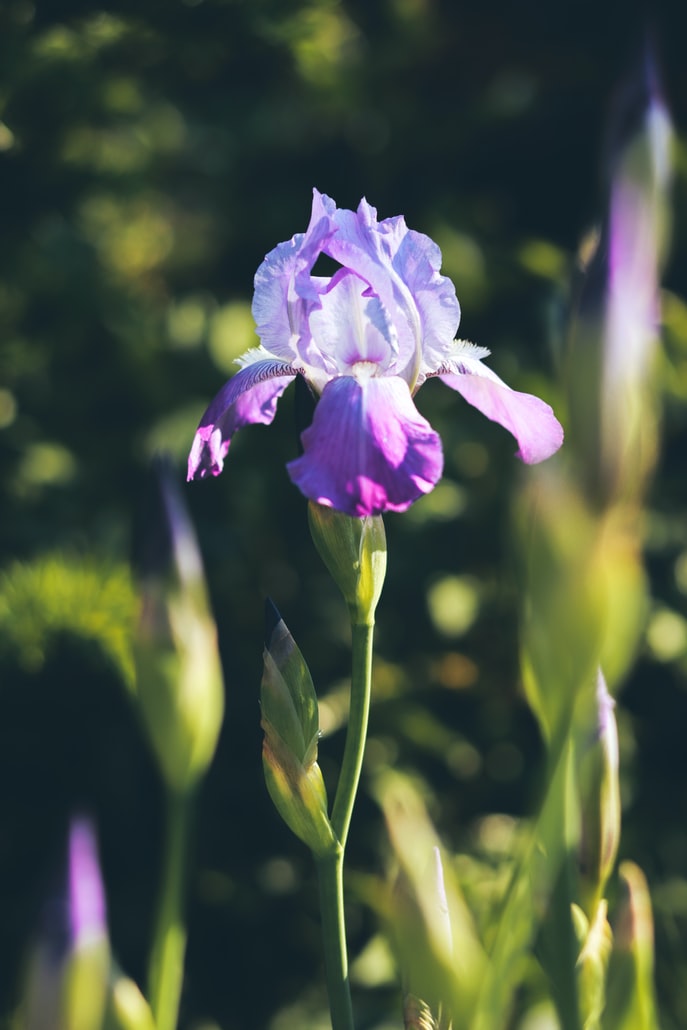
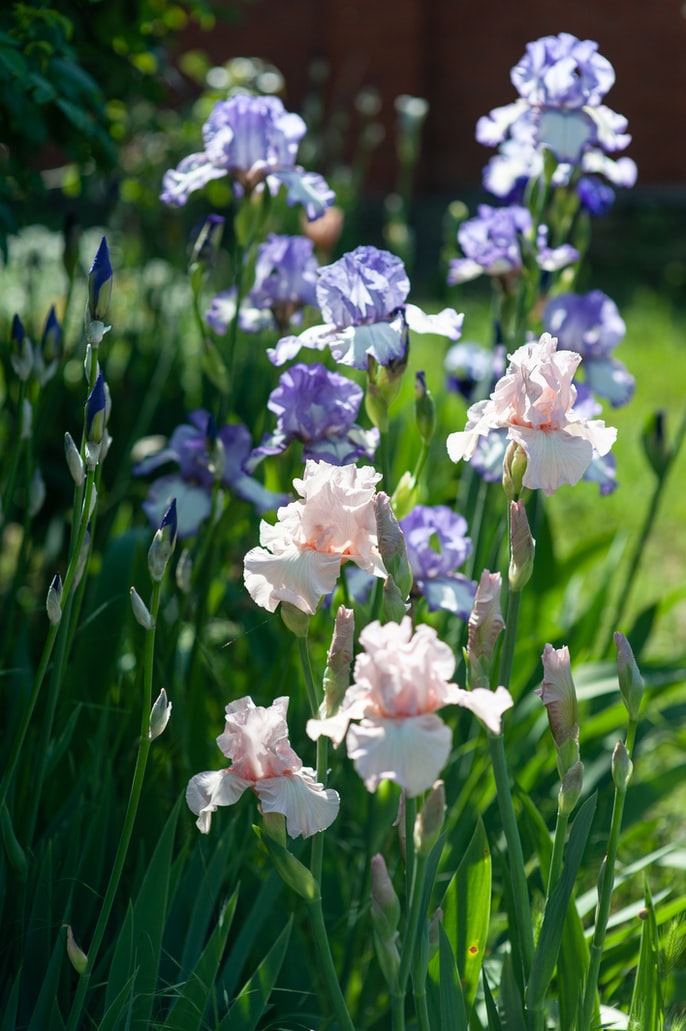
Temperature. The iris can withstand low temperatures well, as well as harsh winters. The plants start growing at 6-8° C. However, it is believed that areas with mild winters and warm climates are favorable for the accumulation of volatile oils.
Water. The iris is relatively resistant to drought, but it reacts favorably to irrigation. In conditions of severe atmospheric drought, combined with soil drought, the plants stagnate or grow slowly.
It does not tolerate excessive moisture, which favors the rot of rhizomes.
Light. Being widespread in the Mediterranean area, the species has s special requirements for light.
Crop technology
Its place in the crop rotation. Being a perennial species, irises must be grown outside the field crop. They can be grown after various precursor plants, provided the ground is cleared in summer. The precursor plant must be part of a crop that has been fertilized with organic fertilizers. It is recommended to cultivate irises after other species that have the property of leaving the soil free of weeds.
Fertilization. Regarding the application of fertilizers, phosphorus fertilizers favorably influence the development of iris plants. Potassium fertilizers are recommended because it has been found to favorably influence the accumulation of volatile oils and root development. Still, too high doses of organic or nitrogen fertilizers lead to an exaggerated development of the roots, favoring, at the same time, the development of rot on the rhizomes. As a result, nitrogen fertilizers and direct fertilization with manure have to be applied to the preceding plants.
Recommended products
-
You can find products on a different store
Change Store -
You can find products on a different store
Change Store -
You can find products on a different store
Change Store -
You can find products on a different store
Change Store -
You can find products on a different store
Change Store -
You can find products on a different store
Change Store -
You can find products on a different store
Change Store -
You can find products on a different store
Change Store -
You can find products on a different store
Change Store -
You can find products on a different store
Change Store -
You can find products on a different store
Change Store -
You can find products on a different store
Change Store -
You can find products on a different store
Change Store -
You can find products on a different store
Change Store -
You can find products on a different store
Change Store -
You can find products on a different store
Change Store -
You can find products on a different store
Change Store -
You can find products on a different store
Change Store -
You can find products on a different store
Change Store -
You can find products on a different store
Change Store -
You can find products on a different store
Change Store -
You can find products on a different store
Change Store -
You can find products on a different store
Change Store -
You can find products on a different store
Change Store
Soil preparation. After harvesting the preceding plant, the land must be freed of plant debris. Plowing should be performed at the latest in the second half of August at a depth of 28-30 cm. Good ground leveling is recommended to avoid puddles.
The preparation of the soil for planting must be done with the polydisc together with the bar for leveling the soil and with the spring-tooth harrow. Also, the soil can be prepared effectively with the combine.
Propagation. Irises are propagated vegetatively by planting rhizomes. The preparation of the propagating material must be done 2-3 days before planting. The rhizomes have to be layered until planting so as not to dehydrate.
The planting season. Irises should be planted in September if there is enough moisture in the soil. Otherwise, they should be planted in October when the first rains fall so that the rhizomes take root until the frost comes.
Planting is not recommended in November, because at this time there are losses due to frost that can compromise the crop. Good results are also obtained by planting in the spring, but no later than March 15th.
Distance between rows/plants per row and planting depth. The planting distance is between 60-70 cm between rows and 28-30 cm between plants per row, achieving a density of 4.8-5.6 plants / m².
The optimal planting depth is 8-10 cm or 10-12 cm. It is recommended to water the rhizomes after planting if there is not enough moisture in the soil and to ridge them at a height of 5-6 cm.
Maintenance works
They differ depending on the year of vegetation. In the first year of vegetation, it is important to control weeds that can suffocate the plants. In the following years, the plants grow at an intense pace and cover the ground. In the first year, they should be weeded out and plowed 2-3 times. The last plowing should be performed in October, being accompanied by slight ridging. 1-2 irrigations are recommended in May and June so that the soil is supplied at 75% of the field capacity with water. Through irrigation, the humidity in the soil increases by 28%.
In the second year of vegetation, it is recommended to control weeds and loosen the soil through 2-3 hoeings. Irrigation of the crop is not recommended, because it favors the formation of spongy rhizomes, prone to rot. In order to increase the production of rhizomes and the content in volatile and iron oils, it is recommended to remove the flowering stems right at the moment of their formation.
Diseases and pests
Among diseases, one of the most common is leaf spot, produced by the fungus Heterosporium pruneti. The disease manifests from spring to late autumn through the appearance of elongated or elliptical oval spots on the leaves, 2-10 mm long and 2-5 mm wide. At first, they are yellow, then they turn gray, bordered by a dark brown edge. The spots first appear on the top of the limb, then progress towards the base. In case of a strong attack, the spots merge and the leaves turn yellow and dry.
Recommended products
-
You can find products on a different store
Change Store -
You can find products on a different store
Change Store -
You can find products on a different store
Change Store -
You can find products on a different store
Change Store -
You can find products on a different store
Change Store -
You can find products on a different store
Change Store -
You can find products on a different store
Change Store -
You can find products on a different store
Change Store -
You can find products on a different store
Change Store -
You can find products on a different store
Change Store -
You can find products on a different store
Change Store -
You can find products on a different store
Change Store -
You can find products on a different store
Change Store -
You can find products on a different store
Change Store -
You can find products on a different store
Change Store -
You can find products on a different store
Change Store -
You can find products on a different store
Change Store -
You can find products on a different store
Change Store -
You can find products on a different store
Change Store -
You can find products on a different store
Change Store -
You can find products on a different store
Change Store -
You can find products on a different store
Change Store -
You can find products on a different store
Change Store -
You can find products on a different store
Change Store
Preventive measures consist of general hygiene. As curative measures, spraying with Merpan 0.2% is recommended, while at the same time it is necessary to avoid excessive moisture.
Rust is produced by the fungus Puccinia iridis. The disease manifests on the leaves through the appearance of numerous small, fluffy pustules, light brown, circular or elongated in the direction of the leaf ribs. These pustules, made up of the uredospores of the fungus, can be isolated or interfluent, distributed on both sides of the leaves.
Rhizome rot is caused by the bacterium Pseudomonas iridis. The bacteriosis manifests itself on the rhizomes and on the underground part of the shoots, which softens, rot, and become covered with a yellow mucilage, with an unpleasant odor. The leaves of diseased plants wither and turn brown starting from the top. The attacked tissues are necrotic. In order to prevent the disease and reduce the damage, it is recommended to avoid fresh organic fertilizers and to administer phosphorus fertilizers. It is also recommended to protect the rhizomes against frost and to apply general hygiene measures.
The iris mosaic virus-infected plants are poorly developed, with mosaic spots, light green or blue, especially in the basal half of the leaves.
The leaflets of flowering buds have blue spots or stripes on a light green background. At the beginning, flowers or spots of a slightly darker color appear on the flowers. In the case of I. Pallida the spots are purple. The flower stalk is shorter than normal, and the infected bulbs start growing late.
As preventive measures, it is recommended to remove diseased plants before flowering and crop rotation.
Among the pests, the most common is the wireworm (Agriotes spp.). The larvae destroy the plants in the area between the roots and the stem, causing their drying and the thinning of the crop.
Iris harvesting
The harvest season. Regarding the harvest season, several researchers have concluded that the irises must be harvested in the second year of vegetation, keeping the crop in the third year is not profitable, because the production potential is reduced. Although in the third year the rhizomes would be more fragrant, they are spongy and the overall production is lower.
It is considered that the optimal harvest season is in August when in the southern areas the weather is dry and hot.
Harvesting the rhizomes in September and especially in October makes it difficult to dry them, and the volatile oil content is reduced 1-1.5 times compared to August. Harvesting rhizomes in spring also lead to production losses.
Harvesting method. The rhizomes have to be harvested by dislocating with the plow without the bulbs. They must be removed with leaves, cleaned of soil, gathered in baskets, and transported to a platform where they are cleaned of leaves and roots.
It is recommended to harvest daily only the amount of rhizomes that can be cleaned of leaves and roots during the same day. Postponing this work until the next day leads to loss of production and quality.















































































































































































































































































































































































































































